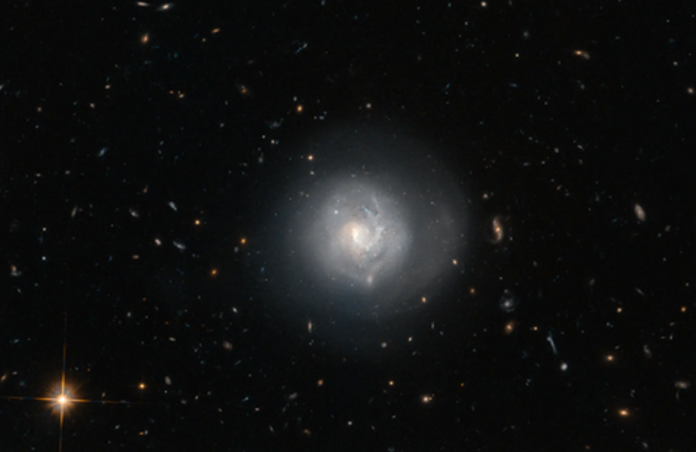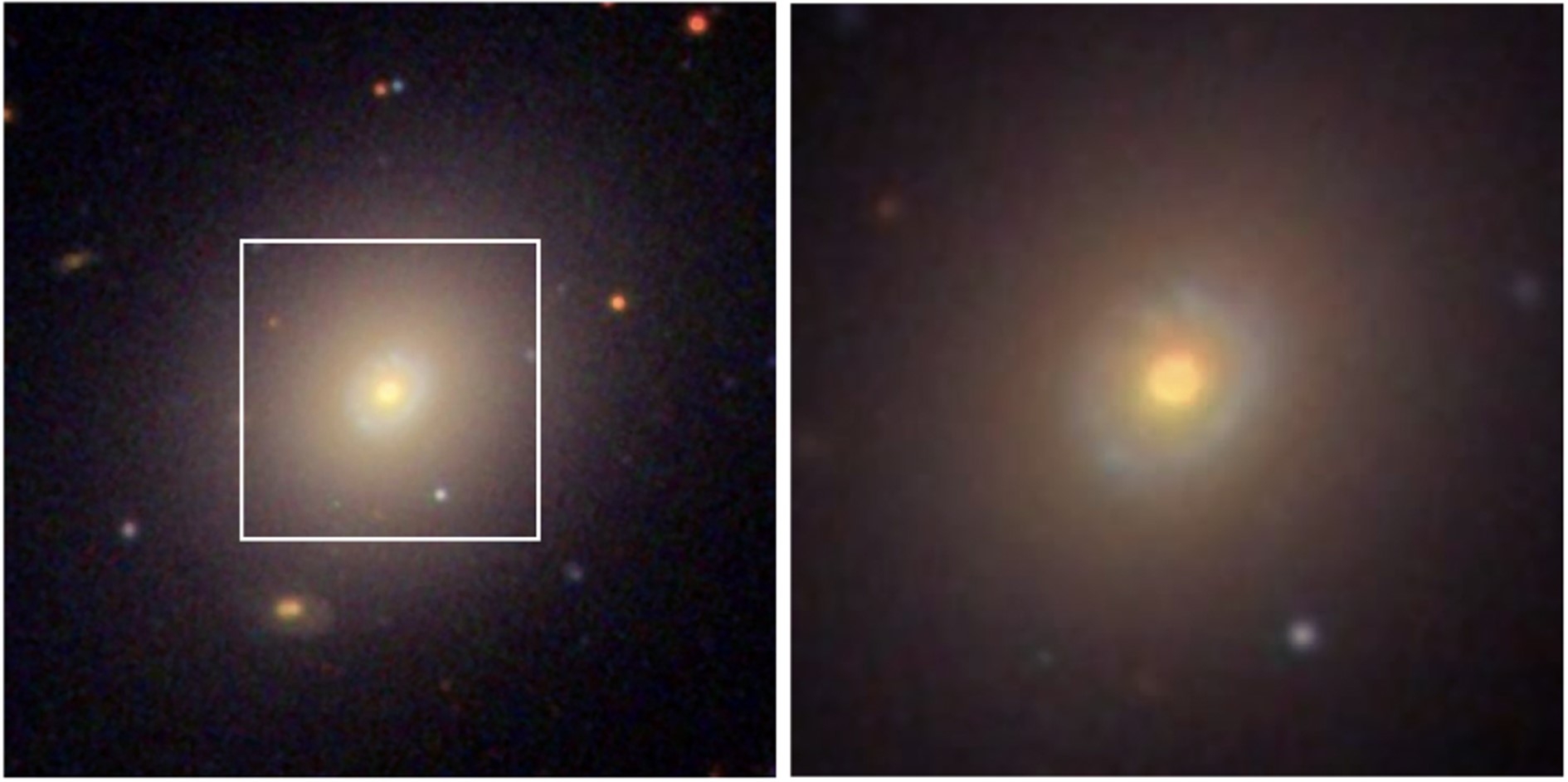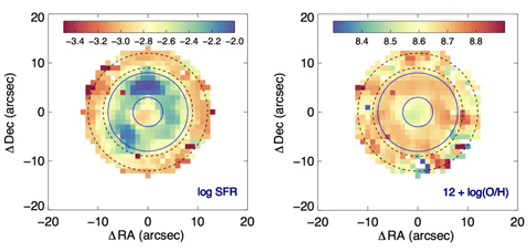Origin of the Nuclear Region in NGC 3182

Spiral galaxies, and ones classified adjacent to these, can be distinguished by whether or not they have a bar. This is a roughly linear collection of stellar material, stretching from the spiral arms, across the galactic centre. These bars form as a result of asymmetric structures, funnelling tremendous quantities of material towards the inner regions of the galaxy. These are thought to lead to the development of the so-called ‘nuclear region’ of a galaxy. They are notable for hosting intense star formation, near the nucleus of a galaxy.
In August of last year, Mina Pak et al investigated the unusual nature of the lenticular galaxy, NGC 3182, located within the Ursa Major constellation, with an approximate mass of 1010.32 M⊙. They discovered that in spite of imaging highlighting no visible bar in the structure, a ring of gaseous medium near the centre had been ionised by a young stellar population. More recently, they published a paper taking a closer look at the structure and composition of NGC 3182 in the hopes of identifying its anomalous nature.

The study investigates the velocity distribution of the gas within the galaxy, in the hopes of perhaps locating a bar-like structure not visible in standard imaging. However, no traces of such a bar could be identified.
Additionally, it does not show any morphological signs of current or recent interactions with its neighbouring galaxies, such as asymmetries around its rotational axis. As such, tidal disruption can be ruled as the explanation for the stellar ring. Investigating the metallicity of the ring, it showed quite a uniform distribution, which presents doubt as to the integration of out-of-galaxy material. Instead, they believe that the star formation is a result of material already present within the NGC 3182, which discounts the possibility of earlier mergers.

Here, the study goes on to suggest that NGC 3182 is in fact a Seyfert galaxy, containing an active galactic nucleus (AGN). However, this is not a very strong case of the phenomenon, as imaging of the galaxy lacks the signature bipolar jets from the galactic nucleus. With reference to prior hydrodynamical simulations of an AGN presented in Luca Ciotti et al, they suggest that the ring formed due to the effects of the radiation pressure supplied by the galactic outflow. However, these models had yet to be observed before now. Pak et al suggest that this radiation outflow in NGC 3182 is capable of compressing the molecular gas clouds surrounding material into the observed ring, then further into pockets capable of stellar formation.
Pak et al state that they believe that such a discovery is quite a rare one, and do not expect many further such discoveries in future survey. As such, they have no intention of further investigating the phenomenon, but do note its contribution to our understanding of galactic evolution, and that its effects should not be neglected.
--
Journal Source: M. Pak et al, The Origin of the Nuclear Star-forming Ring in NGC 3182, The Astronomical Journal, Vol. 165, No. 3, 2023
L. Ciotti et al, The Effect of AGN Feedback on The Interstellar Medium of Early-Type Galaxies: 2d Hydrodynamical Simulations of the Low-Rotation Case, The Astronomical Journal, Vol. 835, No. 1, 2017
Cover Image: ESA/Hubble & NASA and N. Gorin (STScI)
